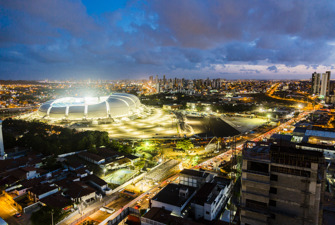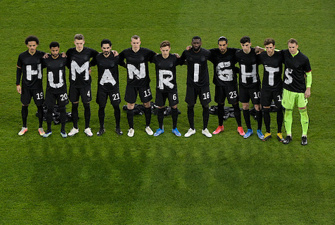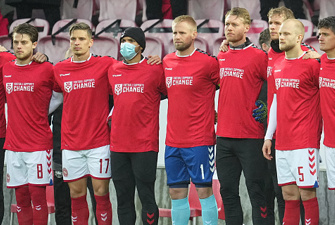South Africa’s most important match
Friday's opening match against Mexico at Soccer City stadium is undoubtedly an important game for the Rainbow Nation and Bafana Bafana. For the first time an African team will kick off the World Cup on home ground. But the most important football game in South Africa was played in 1976 at another stadium in Soweto – Rand Stadium.
Underdogs
South Africa was banned from international football by FIFA from the beginning of the 1960s to 1992 because of apartheid. In the beginning of the 1970s, the white rule in South Africa tried to circumvent FIFA’s requirement of mixed teams by arranging matches between black and white teams. During 1973 and 1974 three matches were played, all at Rand Stadium, and the white team won all three matches.
The authorities soon realized that such matches only increased the conflict between blacks and whites. In 1976, they therefore allowed a South African national team made up of both black and white players. In March 1976 a mixed South African team entered Rand Stadium to play a match against Argentina. Ardent football fans had greater faith in Argentina than South Africa, and did not give South Africa much chance to win.
Miracle in Soweto
Rand Stadium was the scene of all the white Cup finals in football and the bogus ‘international’ matches in 1973 and 74. These matches did not attract many black spectators; however, this time was different. Blacks came in from Soweto in buses and taxis to see the match between South Africa and Argentina, and even though blacks and whites were separated in the stands, they were equally divided in numbers. The South African team had only previously played two matches, while the Argentineans with Antonio Rattin as captain had a lot of experience with international matches. The result? South Africa won 5-0. The black star Jomo Sono scored four goals.
Invictus
Prior to this year's championship many people have seen Clint Eastwood’s movie Invictus. The film describes Nelson Mandela's use of rugby to unify the rainbow nation. Most people believe that the victory over New Zealand in the final of the rugby World Cup in South Africa in 1995 is the ultimate example of sport’s power to unify. Those who were present at Rand Stadium believe that the match on 17 March 1976 was more important!
Lines in history
Soweto also houses Orlando Stadium. As Rand Stadium, Orlando Stadium is a practice venue for teams in this year’s World Cup. Less than two weeks ago an event, similar to the event in 1976, occurred. Here, the Blue Bulls from Pretoria and the Storms from Cape Town played the rugby cup final at Orlando Stadium. The stadium is located in a district that is dominated by blacks, and more than 90% of the white spectators had never been in this part of South Africa before. They were brought in by buses and taxies just like the blacks in 1976. And the spirits were high. There is a clear line between these two games.
Great Expectations
The predictions for economic growth caused by the World Cup are bleaker than the optimists would like. The number of tourists arriving because of the tournament also seems to be less than expected. As always, major championships discourage some tourists who would otherwise have been there, and over-priced tickets and hotels means that many people who would have liked to attend stay at home.
But for a nation that did not get national TV broadcasts until 1976, did not show the World Cup on television before 1990, and did not have a team in the World Cup qualification before 1992, Friday's game and this year's championship will be one of the nation's absolute highlights. And as in 1976, South Africa is seen as the underdog. But do not forget what happened in 1976.







































